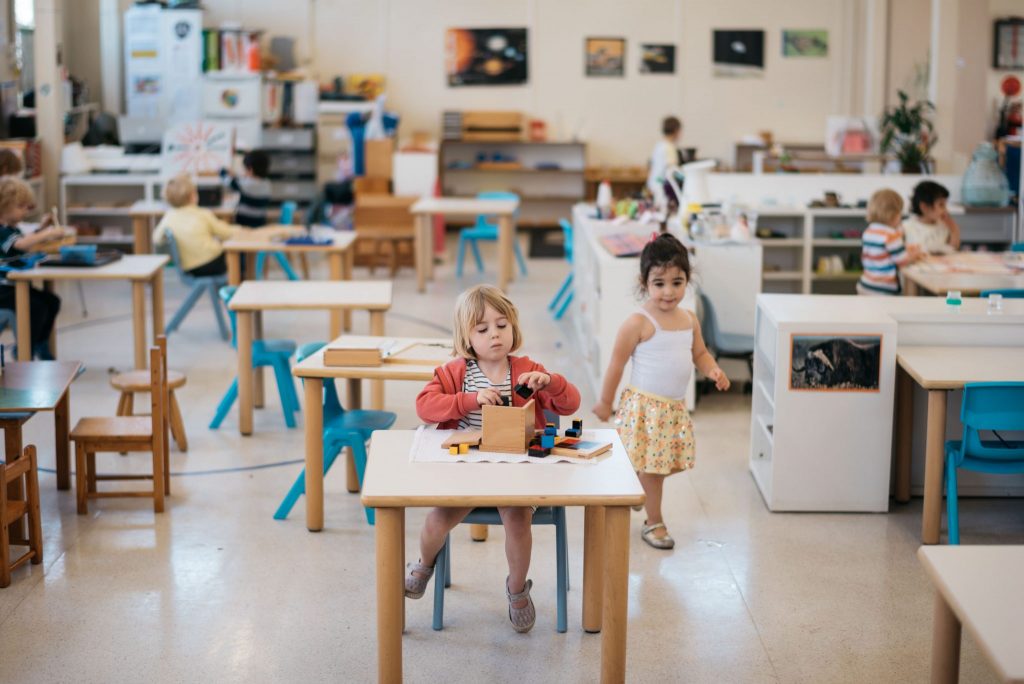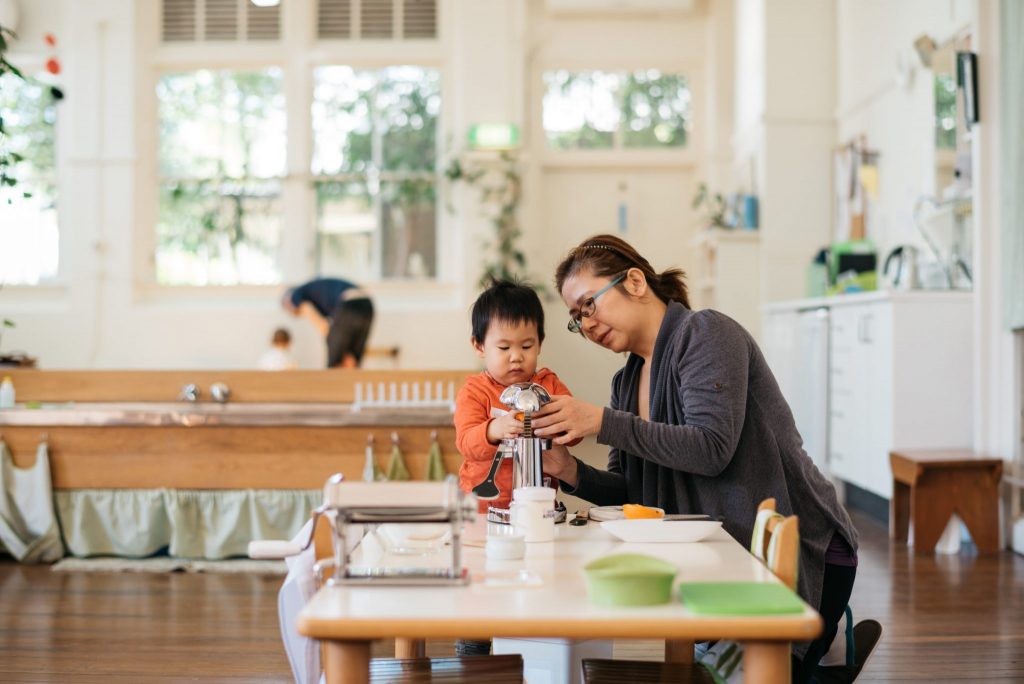Toddler Transition

Toddler Transition
The Toddler Transition program offers the child the beginnings of Montessori “Practical Life”. The Transition program is designed to give the young toddler the opportunity to explore more of the prepared environment and ready themselves for the move to the Parent Toddler Program (PTP). At this time the child shows great interest in beginning to do more for themselves. Montessori’s philosophy of the construction of self and an understanding of sharing is explored. This is an opportunity for parents/carers to enjoy some special time with their child to assist their development.
The approach involves discussion, participation and observation. As parents/carers learn a little more each week they are able to observe how their child is growing and changing, with additional knowledge and respect. Sometimes a parent/carer will be actively participating in activities with their child and other times they will be in the background observing. Either way, this is a time to enjoy the peace away from the pressures of the rest of the day and to be together with other parents and children building a foundation in Montessori education.
I can’t be more pleased that we chose a Montessori education for our child. With the individualised approach, she has graduate a confident, resourceful and independent person. Proud of who she is. I couldn’t ask for more.
John Smith

The Prepared Environment
The room that the group meets in is a “Montessori prepared environment”, reflecting the home of the very young child. The activities presented meet their developmental needs. This means that each activity is specially chosen to appeal to the children and assist in building their psycho-sensory motor development and language skills. The child is ready to take responsibility for themselves, to get a drink or something to eat and then takes great delight in washing up and returning utensils to their designated place.
The environment is always the same to allow for the repetition that the child desires. The program also prepares for the child’s growing independence, self-esteem, confidence and concentration. Everyone works together respectfully as a small community. The Director also explains how the activities can be applied to the prepared environment of the home.
During the session each week there are opportunities for observation, individual discussions, Q&A and reflection. Handouts are offered in addition to articles, email information and suggested books.
What is the general schedule of a Toddler Transition Session?
| Prepare to enter | Children remove shoes and place them with their bag on the shelves. They then go to the bathroom to use the toilet and/or wash hands. |
| Name tag | Parents make a name tag for themselves and their child. |
| Greeting | Shake hands with the Director and say good afternoon. Parents model the action first but do not pressure the child to do it. The Director builds a relationship with the child over time so the child feels comfortable to return the greeting being modelled for them. |
| Observe | The child is allowed to explore the room, and parents observe them as they make their own choice. The child decides what activity they need. |
| Follow your child | All materials are free for the child to explore and work with, at any time, for as long as they wish. Freedom to choose is fundamental in Montessori. In this way, the child shows parents how they are developing. Making choices builds the child’s independence and self-esteem “I can do it for myself”. Repetition is part of this process. |
| Discussion time | Opportunity to discuss different topics and share experiences. |
| Song time | The group shares a few songs at the end of the session. It is a way of assisting the child to understand that the session is about to end and it is also fun; a chance to come together and share the experience of music and movement. |
| Farewell | All say farewell with a handshake. |

In the Classroom
Arrival
- The parent and child practice entry to the environment by taking off shoes, putting away personal belongings and getting a name tag before washing their hands in the bathroom.
- The parent and child greet the Director with a handshake and eye contact. The adults model the greeting and offers the opportunity to the child. The child is never forced, instead allowing them to arrive at grace and courtesy with developing independence and control.
Activities
- The child selects a specific material to work with. Materials include the introduction of language through use of objects and matching cards.
- The child learns the importance of working with one material at time.
- The process of putting work away is developing.
- The child also engages in practical life activities with water and food preparation.
Trained Assistants to Infancy Directors, support parents to assist their child and to develop an understanding of the Montessori pedagogy, in particular the importance of observing a child and allowing them to start doing for themselves.

The future is bright with Inner Sydney Montessori School
L
